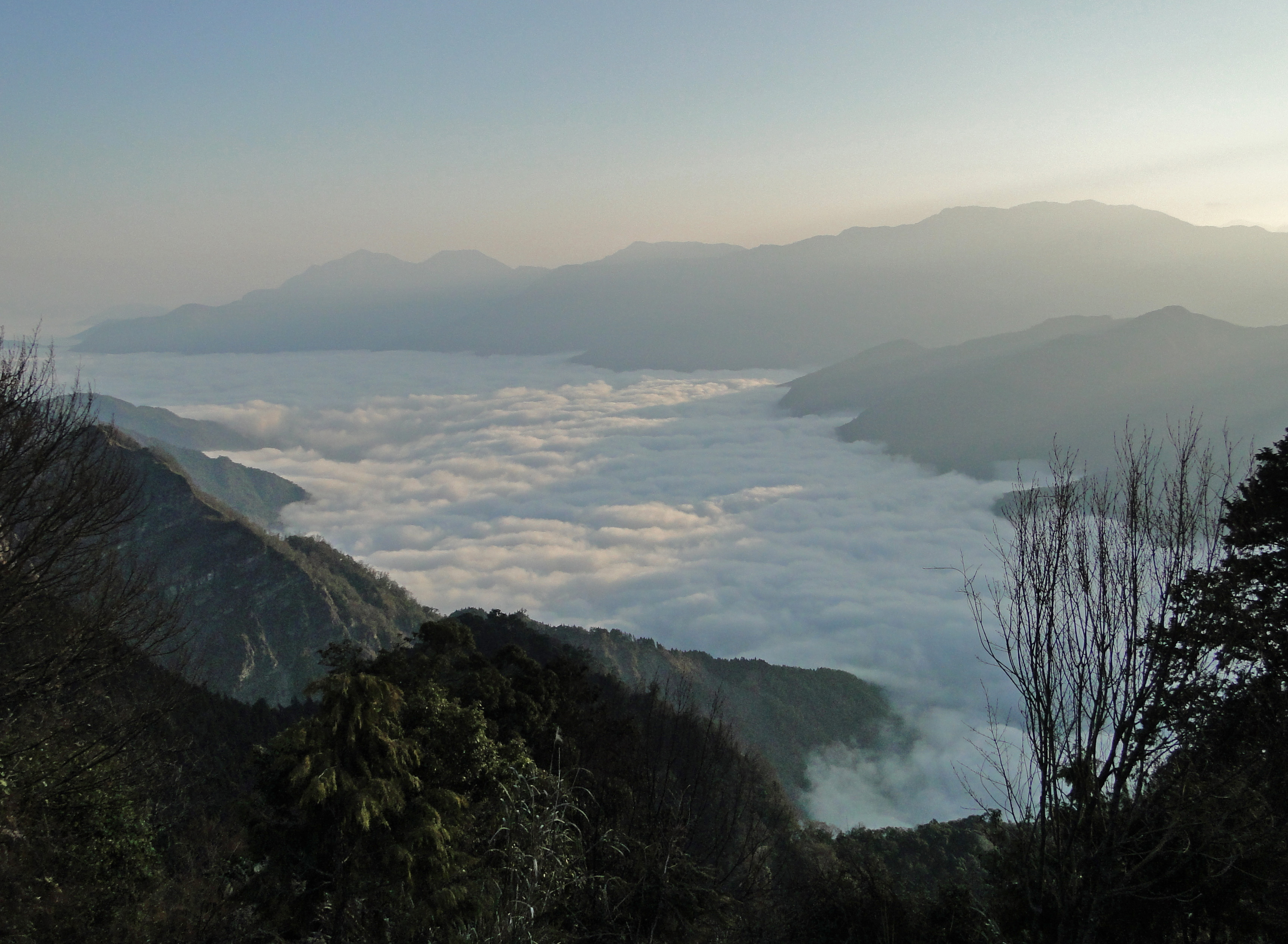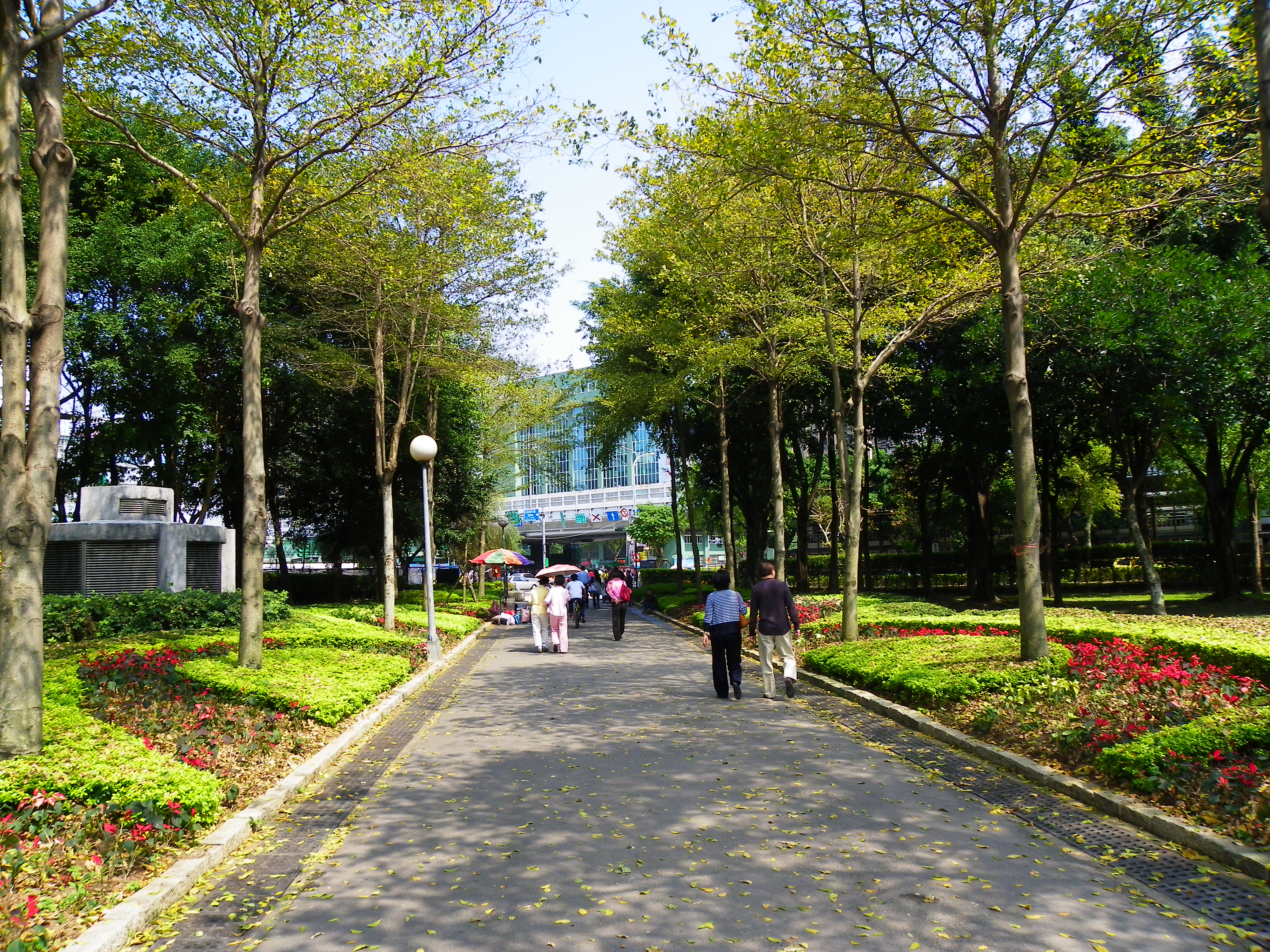|
Wu Feng Park
The Wu Feng Park () is a park in Zhongpu Township, Chiayi County, Taiwan. Name The name of the park is derived from the name of a government official called Wu Feng. He used to resolve disputes between indigenous peoples and the Han Chinese on the lowland, which he earned respect from both groups. Architecture The park has low, red-clay walls which enclose and divide the site with huge character. There are many octagonal, circular and jar-shaped openings, windows and doorways. The central courtyard is devoted to an exhibition that shows Alishan's past, present and proposed future developments. There is also a large display showing off the history and modern crafts of the region's Tsou aboriginal tribe. It houses the headquarters of Alishan National Scenic Area. See also * List of parks in Taiwan This is a list of parks in Taiwan, Republic of China. Taipei * 228 Peace Memorial Park * Bailing Sport Park * Bangka Park * Beitou Park * Bihu Park * Chengmei Ri ... [...More Info...] [...Related Items...] OR: [Wikipedia] [Google] [Baidu] |
Urban Park
An urban park or metropolitan park, also known as a municipal park (North America) or a public park, public open space, or municipal gardens ( UK), is a park in cities and other incorporated places that offer recreation and green space to residents of, and visitors to, the municipality. The design, operation, and maintenance is usually done by government agencies, typically on the local level, but may occasionally be contracted out to a park conservancy, "friends of" group, or private sector company. Common features of municipal parks include playgrounds, gardens, hiking, running and fitness trails or paths, bridle paths, sports fields and courts, public restrooms, boat ramps, and/or picnic facilities, depending on the budget and natural features available. Park advocates claim that having parks near urban residents, including within a 10-minute walk, provide multiple benefits. History A park is an area of open space provided for recreational use, usually owned and maintain ... [...More Info...] [...Related Items...] OR: [Wikipedia] [Google] [Baidu] |
Zhongpu
Zhongpu Township or Jhongpu Township () is a rural township in Chiayi County, Taiwan. Geography It has a population of 43,275 as of May 2022, and an area of . Administrative divisions The township comprises 22 villages: Dingpu, Fushou, Hemei, Hemu, Hexing, Jinlan, Longmen, Longxing, Ruifeng, Sanceng, Shekou, Shenkeng, Shinong, Tongren, Tungxing, Wantan, Yanguan, Yiren, Yumin, Yunshui, Zhonglun and Zhongpu. Economy The agriculture sector of the township is one of Chiayi's most important fruit producers, such as growing papayas, pineapples, bananas, tangerines and mushrooms. 7,000 hectares of the township area is cultivated for agricultural purpose, in which the industry employs around 15,000 people, or 32% of the township population. Tourist attractions * Wu Feng Park The Wu Feng Park () is a park in Zhongpu Township, Chiayi County, Taiwan. Name The name of the park is derived from the name of a government official called Wu Feng. He used to resolve disputes between i ... [...More Info...] [...Related Items...] OR: [Wikipedia] [Google] [Baidu] |
Chiayi County
Chiayi County (Mandarin pinyin: ''jiā yì xiàn''; Hokkien POJ: ''Ka-gī-koān'') is a county in southwestern Taiwan surrounding but not including Chiayi City. It is the sixth largest county in Taiwan. Name The former Chinese placename was Tsu-lo-san (), a representation of the original Formosan-language name ''Tirosen''. A shortened version, Tsulo, was then used to name Tsulo County, which originally covered the underdeveloped northern two-thirds of the island. In 1704, the county seat was moved to Tsulosan, the site of modern-day Chiayi City. Following the 1723 Zhu Yigui rebellion, the county was reduced in size. In 1787, the county and city were renamed ''Chiayi'' (; ) by the Qianlong Emperor to acknowledge the citizens' loyalty during the Lin Shuangwen rebellion. History Qing dynasty Chiayi County was originally part of Zhuluo County during the Qing dynasty. It was given its modern name by the Qianlong Emperor after the Lin Shuangwen rebellion in 1788 for its role in ... [...More Info...] [...Related Items...] OR: [Wikipedia] [Google] [Baidu] |
Taiwan
Taiwan, officially the Republic of China (ROC), is a country in East Asia, at the junction of the East and South China Seas in the northwestern Pacific Ocean, with the People's Republic of China (PRC) to the northwest, Japan to the northeast, and the Philippines to the south. The territories controlled by the ROC consist of 168 islands, with a combined area of . The main island of Taiwan, also known as ''Formosa'', has an area of , with mountain ranges dominating the eastern two-thirds and plains in the western third, where its highly urbanised population is concentrated. The capital, Taipei, forms along with New Taipei City and Keelung the largest metropolitan area of Taiwan. Other major cities include Taoyuan, Taichung, Tainan, and Kaohsiung. With around 23.9 million inhabitants, Taiwan is among the most densely populated countries in the world. Taiwan has been settled for at least 25,000 years. Ancestors of Taiwanese indigenous peoples settled the isla ... [...More Info...] [...Related Items...] OR: [Wikipedia] [Google] [Baidu] |
Park
A park is an area of natural, semi-natural or planted space set aside for human enjoyment and recreation or for the protection of wildlife or natural habitats. Urban parks are urban green space, green spaces set aside for recreation inside towns and cities. National parks and country parks are green spaces used for recreation in the countryside. State parks and provincial parks are administered by sub-national government states and agencies. Parks may consist of grassy areas, rocks, soil and trees, but may also contain buildings and other artifacts such as monuments, fountains or playground structures. Many parks have fields for playing sports such as baseball and football, and paved areas for games such as basketball. Many parks have trails for walking, biking and other activities. Some parks are built adjacent to bodies of water or watercourses and may comprise a beach or boat dock area. Urban parks often have benches for sitting and may contain picnic tables and barbecue gr ... [...More Info...] [...Related Items...] OR: [Wikipedia] [Google] [Baidu] |
Taiwanese Indigenous Peoples
Taiwanese indigenous peoples (formerly Taiwanese aborigines), also known as Formosan people, Austronesian Taiwanese, Yuanzhumin or Gaoshan people, are the indigenous peoples of Taiwan, with the nationally recognized subgroups numbering about 569,000 or 2.38% of the island's population. This total is increased to more than 800,000 if the indigenous peoples of the plains in Taiwan are included, pending future official recognition. When including those of mixed ancestry, such a number is possibly more than a million. Academic research suggests that their ancestors have been living on Taiwan for approximately 6,500 years. A wide body of evidence suggests Taiwan's indigenous peoples maintained regular trade networks with regional cultures before the Han Chinese colonists began settling on the island from the 17th century. Taiwanese indigenous peoples are Austronesians, with linguistic and cultural ties to other Austronesian peoples in the region. Taiwan is also the origin and lingu ... [...More Info...] [...Related Items...] OR: [Wikipedia] [Google] [Baidu] |
Han Chinese
The Han Chinese () or Han people (), are an East Asian ethnic group native to China. They constitute the world's largest ethnic group, making up about 18% of the global population and consisting of various subgroups speaking distinctive varieties of the Chinese language. The estimated 1.4 billion Han Chinese people, worldwide, are primarily concentrated in the People's Republic of China (including Mainland China, Hong Kong and Macau) where they make up about 92% of the total population. In the Republic of China (Taiwan), they make up about 97% of the population. People of Han Chinese descent also make up around 75% of the total population of Singapore. Originating from Northern China, the Han Chinese trace their cultural ancestry to the Huaxia, the confederation of agricultural tribes living along the Yellow River. This collective Neolithic confederation included agricultural tribes Hua and Xia, hence the name. They settled along the Central Plains around the middle and lo ... [...More Info...] [...Related Items...] OR: [Wikipedia] [Google] [Baidu] |
Tsou People
The Tsou ( Tsou: ''Cou''; ) are an indigenous people of central southern Taiwan. They are an Austronesian ethnic group. They reside in Chiayi County and Nantou County. The Tsou numbered around 6,000, approximately 1.19% of Taiwan's total Indigenous population, making them the seventh-largest indigenous group. They are sometimes confused with the Thao people of Sun Moon Lake. History The Tsou are traditionally based in the Alishan area. Their rich oral histories describe migrations of each ancient clans' ancestors into the area between Yushan and the Chianan Plain. Originally, each clan had its own settlement, with the first multi-clan town, Tfuya, forming approximately 1600 CE. The earliest written record of the Tsou dates from the Dutch occupation, which describes the multi-clan settlement Tfuya as having approximately 300 people in 1647. Ethnologists have attempted to reconstruct the development of Tfuya, proposing that each stage of clan migration could be equivalent ... [...More Info...] [...Related Items...] OR: [Wikipedia] [Google] [Baidu] |
Alishan National Scenic Area
The Alishan National Scenic Area is a mountain resort and nature reserve located in Alishan township, Chiayi County, Taiwan. Geography Alishan is in area. Notable characteristics include mountain wilderness, four villages, waterfalls, high altitude tea plantations, the Alishan Forest Railway, and a number of hiking trails. The area is popular with tourists and mountain climbers. Alishan, itself has become one of the major landmarks associated with Taiwan. The area is famous for its production of high mountain tea and wasabi. Alishan is well known for its sunrises, sunset, sea of clouds in the area between Alishan and Yüshan, railway station, and sacred trees. Alishan, along with Taroko Gorge and Sun Moon Lake, is one of Taiwan's most popular scenic attractions. Climate Alishan National Scenic Area spans a broad range in altitude. Lower elevations, such as in Leye Township, share the same subtropical and tropical climate as the rest of southern Taiwan, while the climat ... [...More Info...] [...Related Items...] OR: [Wikipedia] [Google] [Baidu] |
List Of Parks In Taiwan
This is a list of parks in Taiwan, Republic of China. Taipei * 228 Peace Memorial Park * Bailing Sport Park * Bangka Park * Beitou Park * Bihu Park * Chengmei Riverside Park * Daan Forest Park * Dahu Park * Dajia Riverside Park * Fudekeng Environmental Restoration Park * Guandu Nature Park * Guanshan Riverside Park * Jieshou Park * Meiti Riverside Park * Nangang Park * Nanxing Park * Rongxing Garden Park * Sanmin Park * Shanshuilu Eco Park * Shingyi Plaza * Shuangxi Park and Chinese Garden * Songshan Cultural and Creative Park * Taipei Botanical Garden * Taipei Water Park * Xinzhong Park * Yingfeng Riverside Park * Youth Park * Zhongshan Linear Park New Taipei * Erchong Lotus Park * Erchong Riverside Park * Kinchen Park * Stone Sculpture Park Taichung * Fengle Sculpture Park * Lüshun Park * Taichung Metropolitan Park * Taichung New Capital Ecological Park * Taichung Park Kaohsiung * Central Park * Dapingding Tropical Botanical Garden * Jhon ... [...More Info...] [...Related Items...] OR: [Wikipedia] [Google] [Baidu] |







